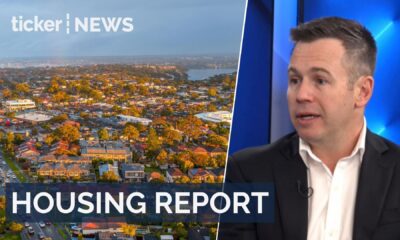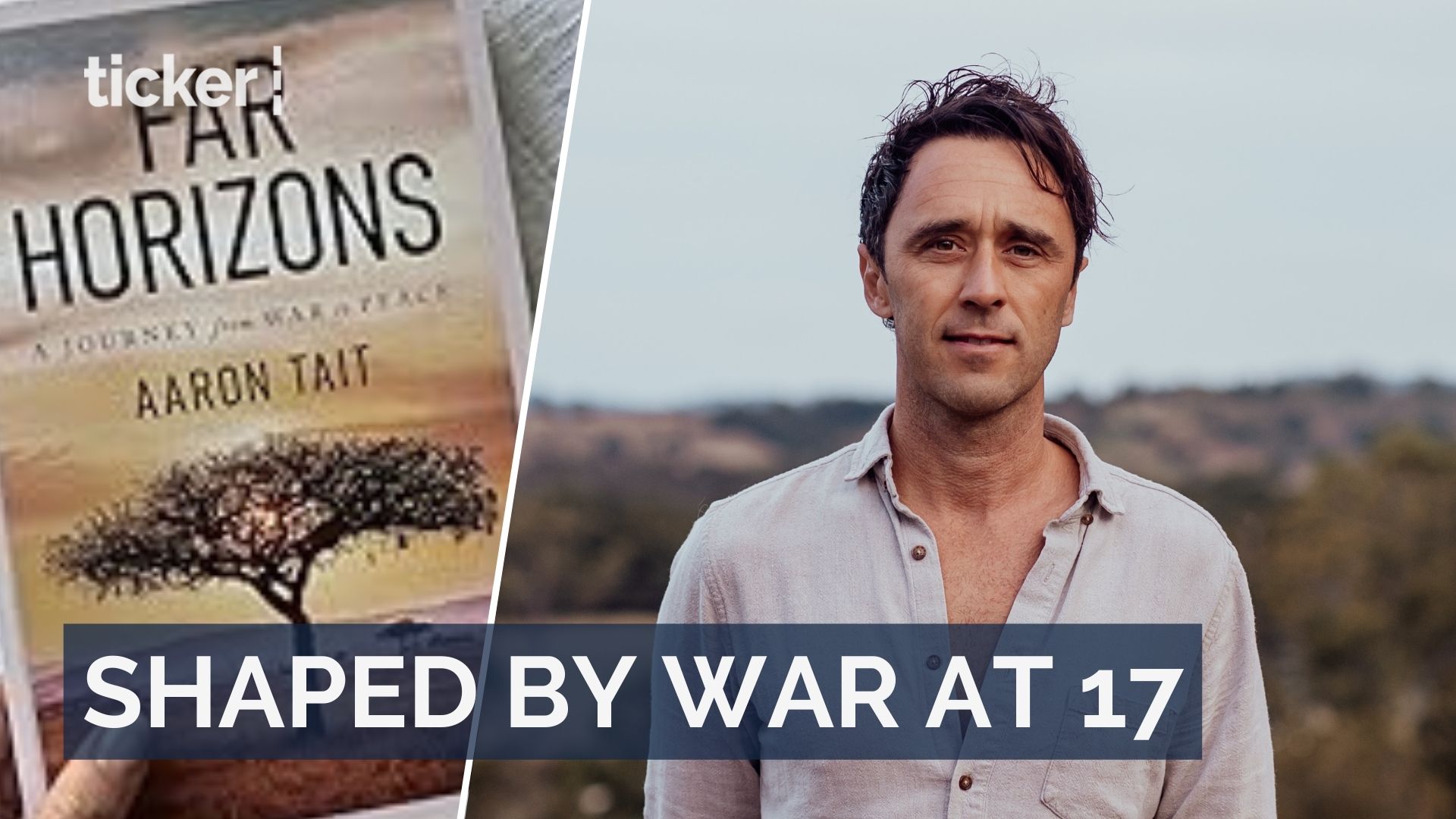Grant O’Brien’s leadership role with the Tasmanian Devils Football Club aims to boost Tasmania’s economy and community engagement.
Article text written by Professor Tim Harcourt
‘More than just a football club’
Chair, Tasmania Football Club | Chair, Tasmania Tourism Board | Former CEO, Woolworths
Footynomics: The Business of Sport
By Tim Harcourt
From stacking supermarket shelves in Sandy Bay, to leading one of Australia’s biggest retailers, Grant O’Brien’s journey is as remarkable as it is inspiring. And now he’s helping shape Tasmania’s next great sporting chapter.
Grant O’Brien knows leadership from the ground up, joining Woolworths as an assistant accountant before rising through the ranks to be the CEO and Managing Director of the retail giant between 2011 and 2016. As a proud Tasmanian who grew up on the North West Coast, the opportunity to come home to Tasmania to chair the new Tasmanian Devils Football Club was just too good to resist.
Grant is also Chair of the Tasmanian Tourism Board of Directors, a member of the Tasmanian AFL Taskforce and, of course, a very energetic inaugural chair of the Tasmanian AFL Footy Club.
More than just a football club
Grant was attracted to the role as inaugural chair of the Tasmania Devils as he sees it as a catalyst for the great transformation of Tasmania in terms of the economy and community through employment, tourism and infrastructure—also providing community cohesion in towns across Tasmania spearheaded by having the Tasmania Devils AFL and AFLW teams in the elite competition and with it increased participation in footy at all levels.
Jobs, Jobs, Jobs
“First and foremost it’ll be a catalyst for an elite sporting team or teams to come to the state, AFL and AFLW and all that comes with a modern-day elite sporting team. So that’s hundreds of jobs just within the club—be that players, be it coaching staff, be it medical staff, marketing and commercial staff. So there’ll be hundreds of new jobs created as a result of having the teams in the state and that’s before you consider the numbers of people that will come to enjoy the team, whether they be spectators or commercial partners and the like. So catalyst for all that it takes to establish a modern-day team.”
Catalyst for Tourism
“Catalyst for tourism, without doubt. We know that sports tourism is a huge business now around the world, it accounts for about 10% as I understand it of all travel around the world now and I don’t think Australia’s any different. So, and tourism is such an important part for Tassie.”
Boost in Participation
“It’s a catalyst also for the participation and wellbeing of youngsters. We’ve seen already the increase in numbers of young kids, boys and girls in the state on the announcement of the Devils as a club have joined their local clubs, their local Auskick clubs in droves—100% increase in the south of the state. We think we’re going to get another 40% increase this year.”
Boost in Infrastructure and Downstream Flow-on Effects
“And of course, probably the biggest ticket item in terms of what the club will be a catalyst for is infrastructure. That’s infrastructure both for the club, whether that be for a training and administration centre—that’s going to cost more than $100 million. That’s a significant construction project in Tasmania in anyone’s terms. And of course the stadium, which is critical for the club, will also be a major piece of infrastructure, creating employment and the like for the state. But that infrastructure is not just confined to the football club. It’ll generate tourism, which means we’re going to need more hotels. We’re going to need more hospitality outlets to accommodate what the club itself brings to the state.”
…Winter Tourism
“I think as someone who looks at tourism on a daily basis, that cooler months where we do see a dip in tourism historically is something that’s a great opportunity for the state. And football fits there beautifully, because as you say, it’s a winter sport.
We know that more and more fans of rival clubs, whether that be the big clubs like Collingwood, Carlton, Essendon, whoever, travel in number now. In fact, Brendan shared that typically there’ll be around 5,000 Richmond fans travel to interstate games each time they’re played. That’s a big injection in a period where we’ve got capacity and we’ve got capability during the cooler months.
So we’ll be able to top up the assets that we’ve already got, and we will justify the construction of new hotels and new hospitality. So it’s a great opportunity just from a footy point of view, but having the infrastructure will also facilitate other events during those cooler months. So it’s a wonderful opportunity for the state.”
Tasmania as a Leader in Innovation, Not a Laggard
“Where Tasmania and Tasmanians have been bold, Tasmania has benefited. If you look at Mona, who could be more bold than to have that idea? And it changed Tasmania, particularly tourism, changed it completely. And we’ve had a decade or more of benefit from that occurring.
If you go way back in time to the 60s and 70s, having Wrest Point Casino as the first casino in the country provided an injection for tourism at that particular point in time.
And if you look at more recent innovation around the Three Capes Track and a lot of the environmental investments that have been made around the state—where Tasmanians have been bold, Tasmanians have benefited. This is an opportunity within the stadium to be bold.”
Existing Stadium Capacity: Would UTAS and Bellerive Be Enough?
“If you look at UTAS Stadium in the north of the state, it seats in the order of 13,000 people currently and standing room of probably another four or five.
Similarly, with Ninja Stadium in Hobart, it’s got seating capacity of 12,500, with people able to sit on the hill for another 5,000. So both of those stadiums have got capacity of about 17,500, even in a redeveloped form as UTAS will be.
That’s not going to be anywhere near enough for the people that are going to come and want to watch the games. What would happen if you just had those two stadiums? What would happen to bring the Devils in over 10 years?
Commercially that would be a challenge. The ability to firstly satisfy the demand, not just from local, if you’ve got a Richmond in town and there are 5,000, and you’ve only got a 17,000 seat capacity stadium, that’s going to knock a lot of Tasmanians out if we made allowance for all of those interstaters.
So we simply have to have a bigger stadium. So there’s a lot of discussion around the stadium, but sometimes that point is actually missed.
We need bigger capacity stadium. Then we take the opportunity to, through technology and through experience, game day experience, we may get such a unique opportunity that it stands out as a beacon, just as MONA has done and just as Wrest Point did all those years ago.”
Not Just a Stadium but a Whole Precinct
“The precinct must be a great opportunity for the club and the state. I’ve heard it described in recent days and weeks as our new Mona, in terms of the scale of the opportunity that it provides for the state.
I was at Dark Mofo during the weekend, which attracts enormous numbers to the state. Some of those events are actually on the site of where the new stadium is set to be built at Mac Point. And then you’ve got the Winter Feast at the Salamanca end.
And it was just a constant river of people between those two sites. And it wouldn’t have been lost on others, and it certainly wasn’t lost on me, while walking alongside people between those on the waterfront, the bars, the restaurants and the event that is Dark Mofo.
How that could be like a football game. So volume of people would be similar, the excitement would be similar and the benefit that the town of Hobart gets would be more than similar.
Because more studies have shown, again in relation to sports tourism, that they come and watch the game, but probably 70% of them stay longer and visit other places. And again, dispersal within Tasmania is a wonderful opportunity.”
Benefits Beyond Hobart …and Launceston
“We can’t forget that the benefit of that sports tourism is not confined to Hobart. Launceston is going to get four games and bigger games than they’ve had before.
And so it’s not Hobart-centric in terms of the benefits, it’s across the state. And Brendan Gale and Kath McCann particularly are very focused on making sure that the club is available to all and reaches out to all and touches all within Tassie.”
A Tassie Round?
“If you think about Tassie, Tassie’s a little unique as a state isn’t it, where half the population is in the north and half the population is in the south. But more than that, it’s spread across many, many communities and sports the glue.
But what it also means is there’s a footy ground in every town across the state. Gravel or not. Whatever they could cobble together it would seem. But it’s a heartbeat for the towns, it’s in the centre of a lot of the towns and it’s where the town comes together.
So I think Tasmania, like Adelaide, is a perfect venue for gather round type matches. We put our hand up already to say we’re keen. Tassie round? Yep, I would.
And the benefit it would provide right across the state to your point is obvious I think to us all.
And therefore it makes us determined and as I said we’re already knocking on the door.
You could have gather round in Adelaide and Tassie Round here. That’s our point. That’s our point. And we would like to, knowing and acknowledging how quickly the women’s game is growing, that AFLW could and should have its own gather round.
So there are many things there that once you’ve got a team in place, once you’ve got infrastructure in place, it just opens the door. It’s the catalyst.”
Sport and Community
“My motivation for doing it is only in part to see an elite team or teams, AFL and AFLW teams be granted to Tassie. I think it enables what I think is most important for Tassie.
And it was a stamp on me from a very early age growing up in Penguin where 1800 odd people in the town, but they all emptied into the ground on a Saturday morning.
And the guy who was on the gate was a news agent, the bloke who was up plugging in the PA system was the mayor.
And the guys who had white overalls on and a towel around their neck posing as physiotherapists were actually wood, were chippies and plumbers and electricians. You know, it was all in.
And it was a mechanism for the town to engage and connect and check up on each other in a way. And given the layout of Tassie with communities all around Tassie, sport—not just football—sport is at the heart of keeping Tassie together and engaged.
And I think having the AFL teams, and we’re already seeing it, is encouraging more and more people to pull on a Devil’s Guernsey and whether it’s Auskick or whether it’s in the more senior clubs.
I want community footy and I want communities to benefit from this. It isn’t for the AFL to benefit singularly or even in a major part, it’s for Tasmania to benefit.
And that’s what we’re building. And I’m sure if you ask Brendan Gale and Kath McCann and the directors of our football club, that’ll give you the same answer, because we sat down at our first board meeting and we went around the table and we said, what do you want as directors to get out of this club?
And the answers were basically the same. This is community benefit driven by having elite teams that are more than competitive in the national competitions, teams that we can be proud of, that play in a way that we can be proud of, have a culture that we can be proud of, that inspires people to engage and to participate in their communities. And I think that’s for the good of Tassie.”
A Final Word
Economists often write about ‘social capital’ and how community connections bring stability and strength. Grant O’Brien’s memories of the Penguin football club and its importance to the community is the reason why he came back to help the Tasmania Football Club succeed in the national competition. To me, it was an example of an investment in social capital which goes hand in hand with investing in physical capital – infrastructure like stadia, precincts, high performance centres and upgrades to local ovals and sport facilities.
Professor Tim Harcourt is Chief Economist for the Centre for Sport, Business and Society at University of Technology Sydney (UTS) and host of Footynomics – the Business of Sport TV series on Ticker News.
Watch the show on Ticker News




 News5 days ago
News5 days ago


 Shows5 days ago
Shows5 days ago


 Leaders15 hours ago
Leaders15 hours ago


 Tech4 days ago
Tech4 days ago


 Money13 hours ago
Money13 hours ago


 Tech4 days ago
Tech4 days ago


 News14 hours ago
News14 hours ago


 News5 days ago
News5 days ago





